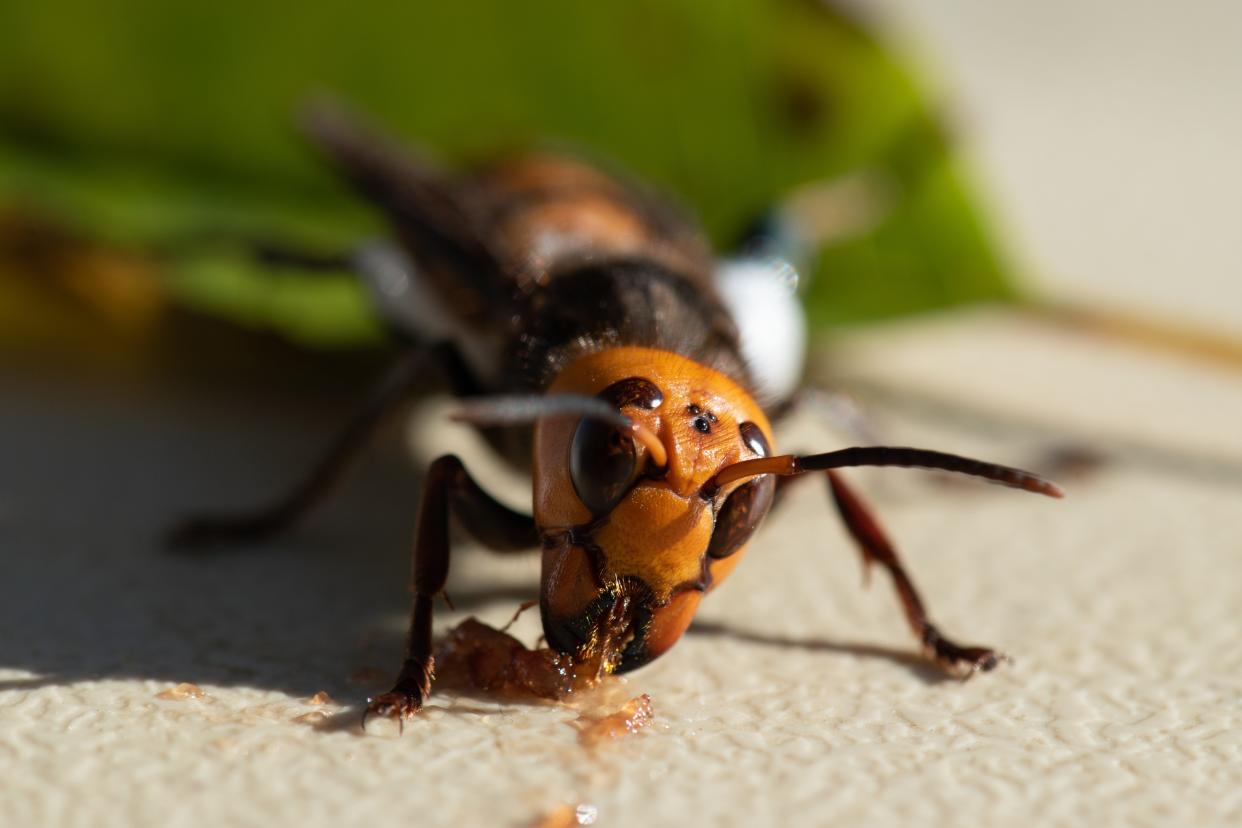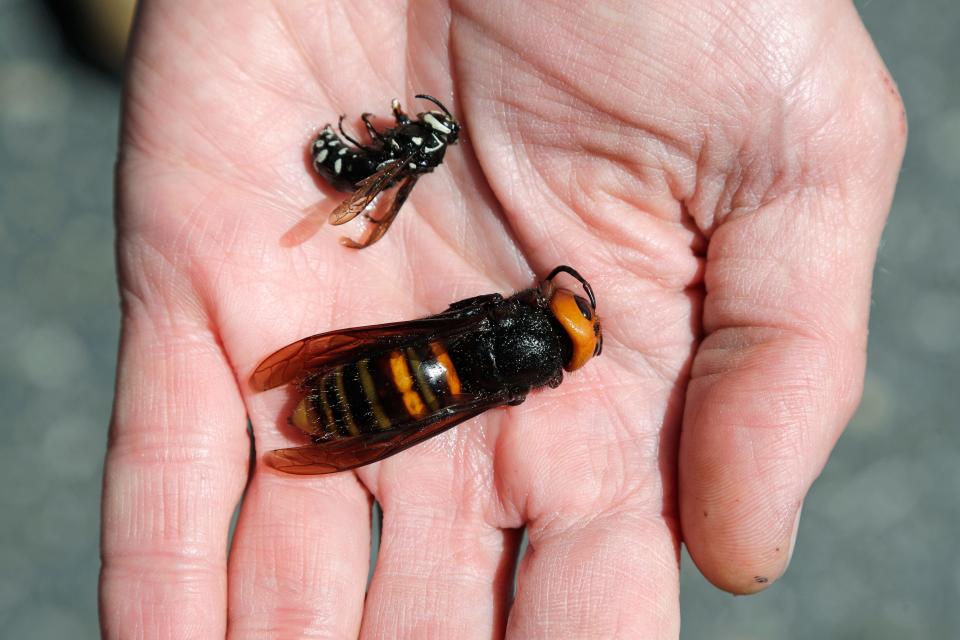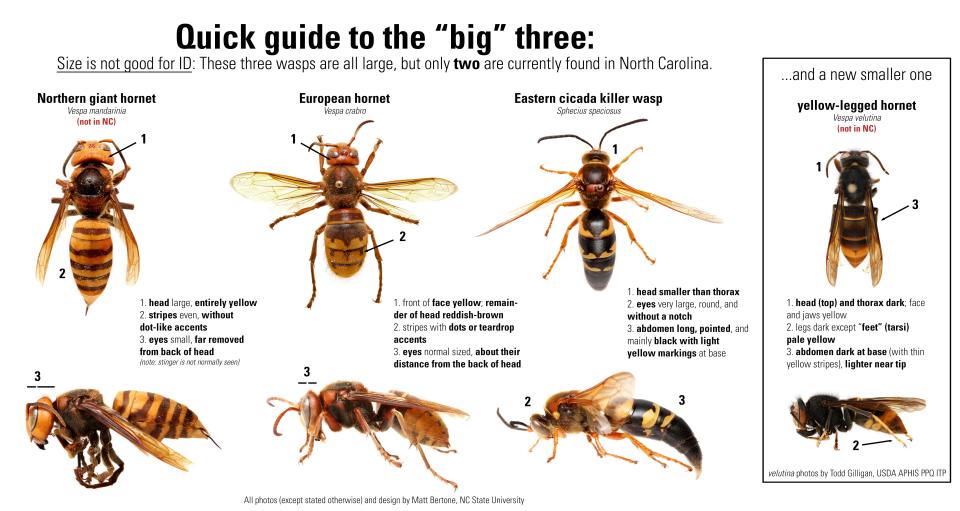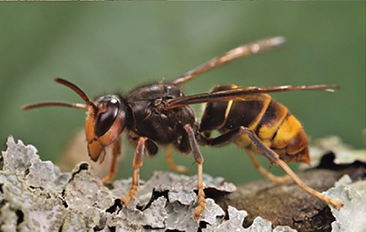Has the Asian 'murder hornet' made its way to NC? Despite some reports, officials say not yet.

Like ghosts, bigfoot and the Carolina panther, possible sightings of the scary-looking insect have proliferated across the state as the pandemic and a growing population means more people are exploring or working outside.
The most recent false alarms have come in recent weeks from Charlotte and other Western North Carolina locations, where cicada killer wasps − impressive in size in its own right, but a native species − have been misidentified as the "murder hornet" from another continent.
But so far Asian giant hornets, recently renamed the northern giant hornet, have yet to be formally sighted in the Tar Heel State. The giant hornet generated national fear and concern when the wasps were discovered in the Pacific Northwest in late 2019, with nests found a year later.
North Carolina, however, has proven to be a friendly host for a slew of invasive plant and animal species, and climate change is only expected to further expand the welcome mat for non-native species.
Does that mean it's only a matter of time before the big hornet with an even scarier reputation reaches the state?
Maybe, a thought that's likely enough to give a lot of people goosebumps.
"If they can survive in the Pacific Northwest, in Japan and other parts of Asia, then I have no doubt they'd be able to survive here if they were able to get here," said Dr. Matt Bertone, director of the Plant Disease and Insect Clinic at N.C. State University.

Ferocious reputation
Native to forested parts of Asia, the northern giant hornet, Vespa mandarinia, is viewed as a significant threat to Western honey bees because they have no natural defense against the aggressive invader. In late summer and fall, hornet colonies attack beehives, destroying entire bee colonies to feed their brood and produce new queens. That garnered the species the moniker of "murder hornet" in the press and online.
Dr. Sydney Crawley, principal vector scientist with Rentokil Initial North America and an adjunct professor at N.C. State, said it is a well-deserved reputation.
“There's no question native hornets attack honey bees, but they typically attack just a few at a time," said the entomoligst. “But with northern giant hornets, they attack the brood (juveniles), so they can wipe out colonies in a very short amount of time. So left unchecked, damage to honey bee colonies could be significant.”
Up to 2 inches long, the insect also deploys a potent 1/4-inch long stinger, which is more dangerous than that of native hornets and wasps. While the northern hornet's venom isn't as painful as other species, they do inject more of it at a time and their long stingers can penetrate typical bee suits, Crawley said.
GONE OR JUST HIDING? NC Answers: Is the Carolina panther still lurking in the shadows?
On the march?
A 2020 paper published in the Proceedings of the National Academy of Sciences (PNAS) by researchers from Washington State University found that if eradication efforts in the Pacific Northwest fail, the invasive hornet could find suitable habitat throughout much of the U.S. Eastern Seaboard. A map with the paper shows North Carolina at the southernmost point of the hornet's projected prime habitat that could support expansion.
The researchers said Asian giant hornets are most likely to thrive in places with warm summers, mild winters and high rainfall. But extreme heat is lethal, with areas surpassing 102 degrees difficult terrain for the insect invaders. Already the hornet is a major ecological problem on continental Europe, where it was accidently introduced in 2004. British officials are working hard to keep the invasive bug from reaching the U.K,, but a huge nest holding more than 750 potential new queens was found this month in the Channel Islands, a group of British-owned islands near France in the English Channel.
Climate change could be a mixed bag for the Asian interloper if it makes it to North Carolina. While it is forecast to bring hotter temperatures to the Tar Heel State, climate change also is projected to bring drier weather, punctuated with periods of heavy rains, to the Southeastern U.S.

WORRYING TREND A warming planet is pushing hurricanes north and deeper inland. What that means for NC
The region's changing climate brought on by human-induced warming of the atmosphere has already made the state a welcoming home for a slew of non-native species that are having impacts on the environment and human health, ranging from the fire ant and a witches brew of tropical viruses to the armadillo and emerald ash borer. Some of these invasives, like the northern hornet, were brought to the U.S. by accident, many on ships carrying cargo from other parts of the world. Others, like kudzu and beach vitex, were released intentionally before officials released that was a colossal mistake.
While climate change could help the northern hornet settle in, it would have to get to the East Coast first. Both Crawley and Bertone said it's highly unlikely the northern giant hornet would be able to wing it to North Carolina on its own, making accidental transport the most likely possibility.
"Whether it does really depends on human activity and how good we are in being vigilant and having effective control measures in place," Crawley said.
Mistaken identity
A similar, albeit slightly nicer cousin of the northern giant hornet is already found in North Carolina.
The European hornet was first spotted in North America in the mid-19th century, and is now found in most areas east of the Mississippi.
"They are big and look pretty scary," Crawley said. "But they are normal and completely common here.”
Bertone said more than 70% of the photos of possible northern giant hornets that are submitted to his lab are actually European hornets, with the rest being cicada killer wasps.
ARRIVAL IMMINENT Coming soon to Wilmington: Invasive pest that has decimated millions of NC ash trees

While also non-native, Bertone said the European hornet has been integrated into the local environment. Whether the same thing would happen as easily with the more aggressive northern hornet is unknown.
But a bigger stinging threat could be closer to arriving in the Tar Heel State than a "murder hornet" 2,800 miles away near Seattle.
In August, officials in Georgia confirmed the first sighting of a yellow-legged hornet in the U.S. near Savannah. Like the northern giant hornet, the insect native to Southeast Asia is seen as a major threat to honey bees, other native pollinators, and the state's agricultural sector − which, like in North Carolina, is Georgia's biggest industry.
"We're not special or immune to having something like that arrive here, so we do need to stay vigilant," Bertone said.
Reporter Gareth McGrath can be reached at GMcGrath@Gannett.com or @GarethMcGrathSN on Twitter. This story was produced with financial support from 1Earth Fund and the Prentice Foundation. The USA TODAY Network maintains full editorial control of the work.
This article originally appeared on Wilmington StarNews: Asian giant hornets not in NC yet

